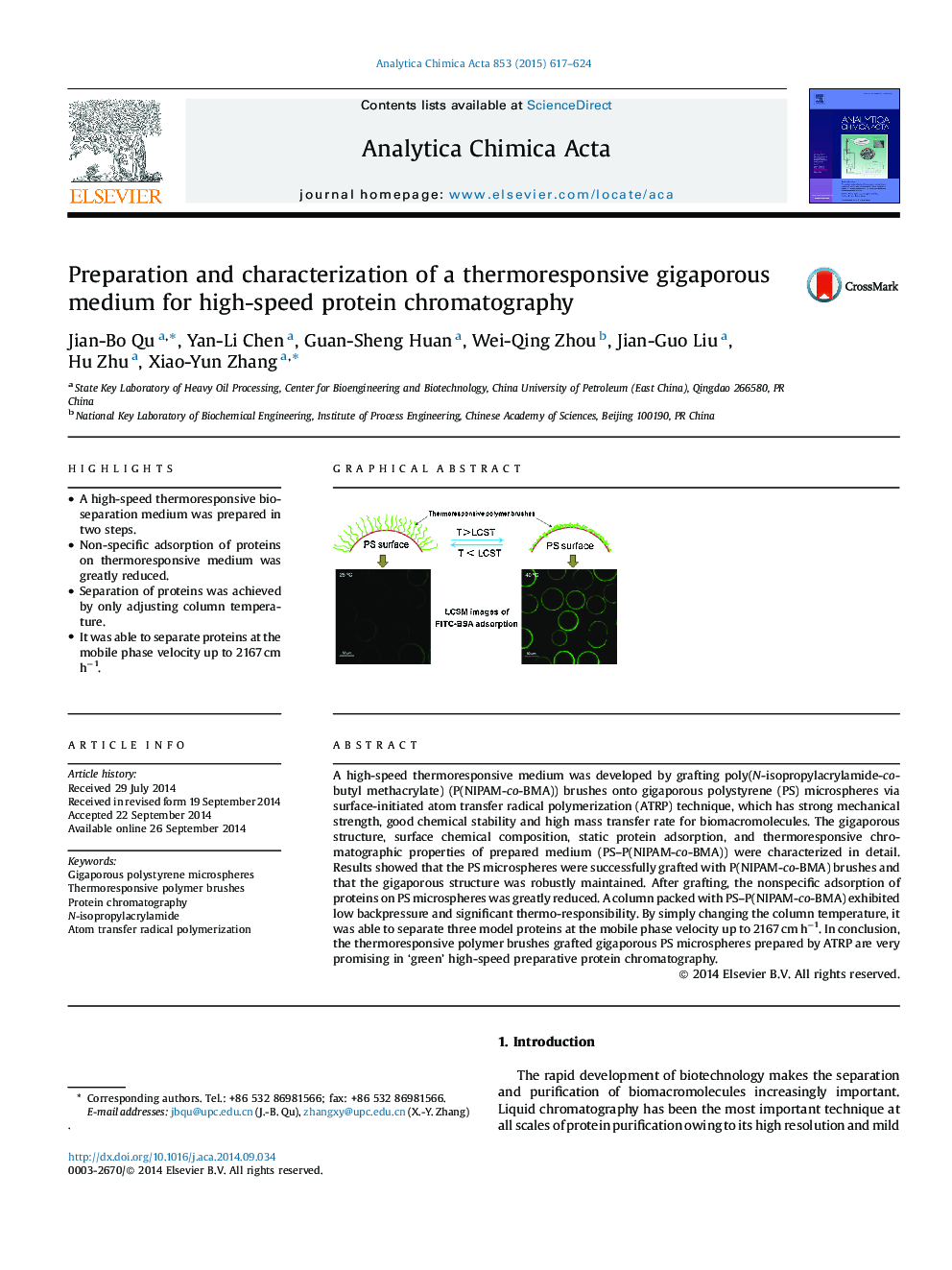| Article ID | Journal | Published Year | Pages | File Type |
|---|---|---|---|---|
| 1163706 | Analytica Chimica Acta | 2015 | 8 Pages |
•A high-speed thermoresponsive bioseparation medium was prepared in two steps.•Non-specific adsorption of proteins on thermoresponsive medium was greatly reduced.•Separation of proteins was achieved by only adjusting column temperature.•It was able to separate proteins at the mobile phase velocity up to 2167 cm h−1.
A high-speed thermoresponsive medium was developed by grafting poly(N-isopropylacrylamide-co-butyl methacrylate) (P(NIPAM-co-BMA)) brushes onto gigaporous polystyrene (PS) microspheres via surface-initiated atom transfer radical polymerization (ATRP) technique, which has strong mechanical strength, good chemical stability and high mass transfer rate for biomacromolecules. The gigaporous structure, surface chemical composition, static protein adsorption, and thermoresponsive chromatographic properties of prepared medium (PS–P(NIPAM-co-BMA)) were characterized in detail. Results showed that the PS microspheres were successfully grafted with P(NIPAM-co-BMA) brushes and that the gigaporous structure was robustly maintained. After grafting, the nonspecific adsorption of proteins on PS microspheres was greatly reduced. A column packed with PS–P(NIPAM-co-BMA) exhibited low backpressure and significant thermo-responsibility. By simply changing the column temperature, it was able to separate three model proteins at the mobile phase velocity up to 2167 cm h−1. In conclusion, the thermoresponsive polymer brushes grafted gigaporous PS microspheres prepared by ATRP are very promising in ‘green’ high-speed preparative protein chromatography.
Graphical abstractFigure optionsDownload full-size imageDownload as PowerPoint slide
